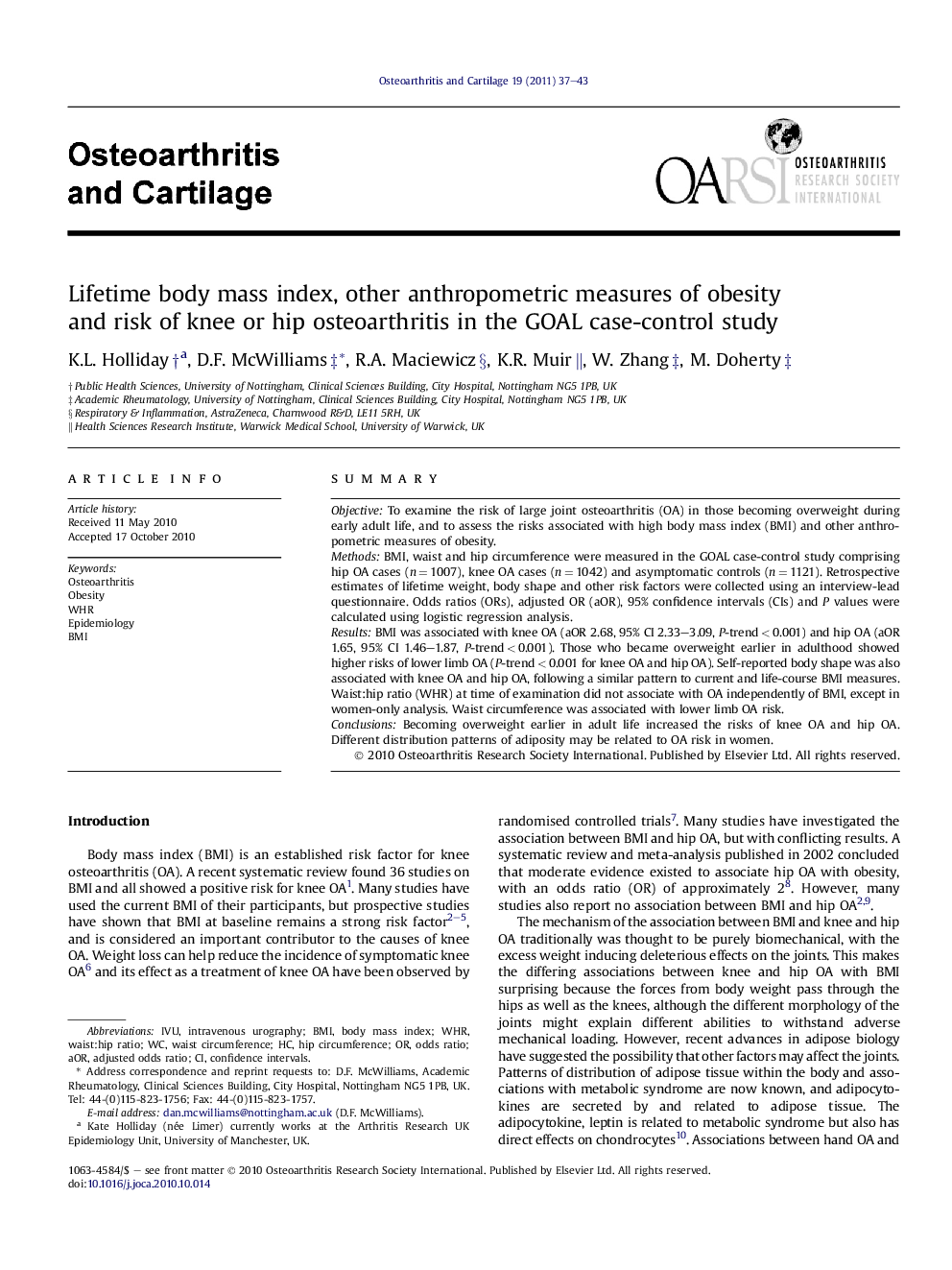| Article ID | Journal | Published Year | Pages | File Type |
|---|---|---|---|---|
| 3380612 | Osteoarthritis and Cartilage | 2011 | 7 Pages |
SummaryObjectiveTo examine the risk of large joint osteoarthritis (OA) in those becoming overweight during early adult life, and to assess the risks associated with high body mass index (BMI) and other anthropometric measures of obesity.MethodsBMI, waist and hip circumference were measured in the GOAL case-control study comprising hip OA cases (n = 1007), knee OA cases (n = 1042) and asymptomatic controls (n = 1121). Retrospective estimates of lifetime weight, body shape and other risk factors were collected using an interview-lead questionnaire. Odds ratios (ORs), adjusted OR (aOR), 95% confidence intervals (CIs) and P values were calculated using logistic regression analysis.ResultsBMI was associated with knee OA (aOR 2.68, 95% CI 2.33–3.09, P-trend < 0.001) and hip OA (aOR 1.65, 95% CI 1.46–1.87, P-trend < 0.001). Those who became overweight earlier in adulthood showed higher risks of lower limb OA (P-trend < 0.001 for knee OA and hip OA). Self-reported body shape was also associated with knee OA and hip OA, following a similar pattern to current and life-course BMI measures. Waist:hip ratio (WHR) at time of examination did not associate with OA independently of BMI, except in women-only analysis. Waist circumference was associated with lower limb OA risk.ConclusionsBecoming overweight earlier in adult life increased the risks of knee OA and hip OA. Different distribution patterns of adiposity may be related to OA risk in women.
